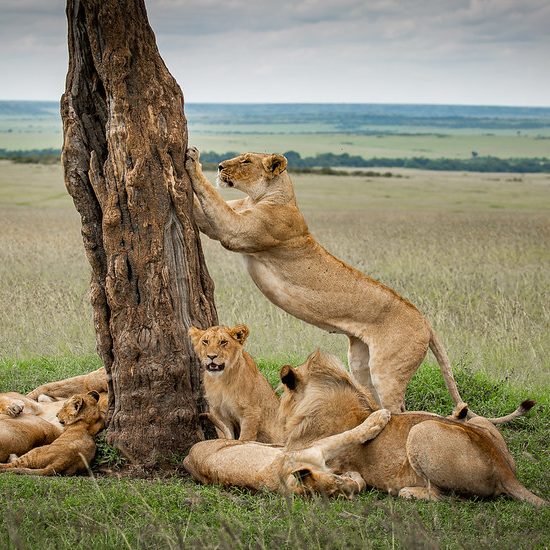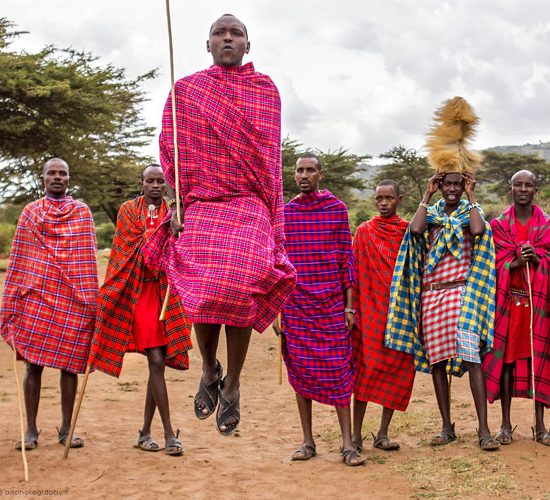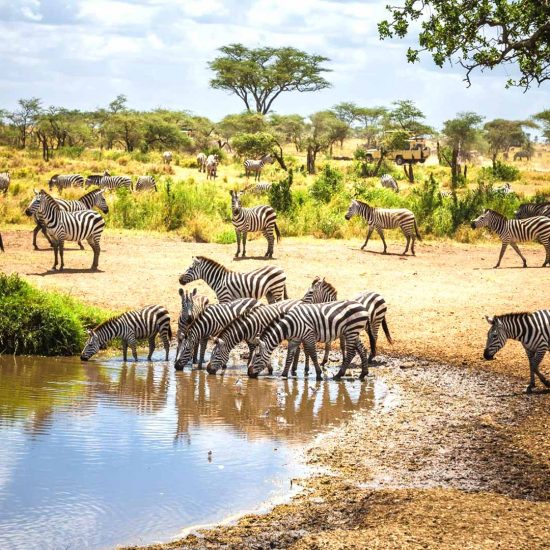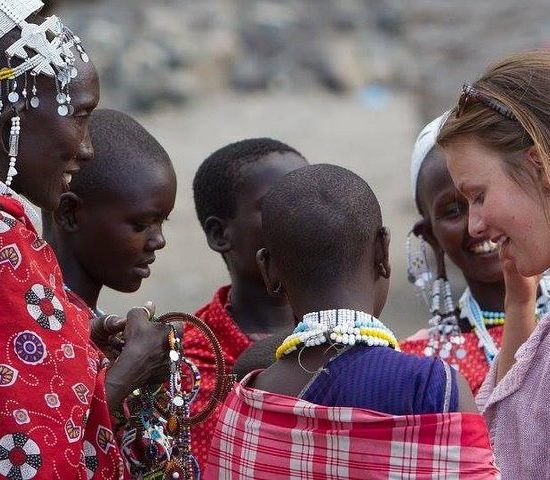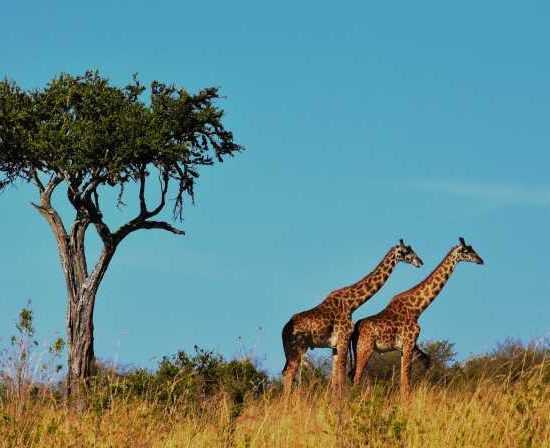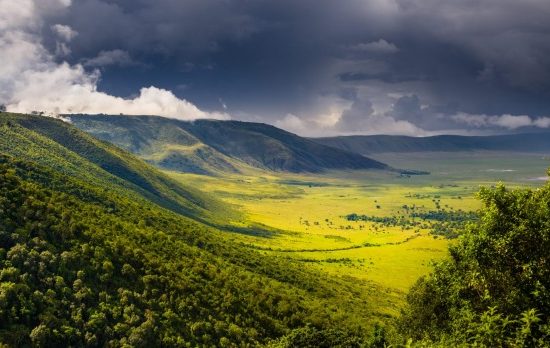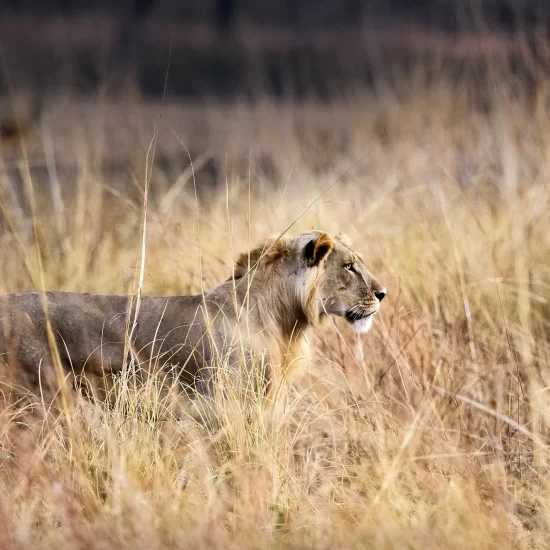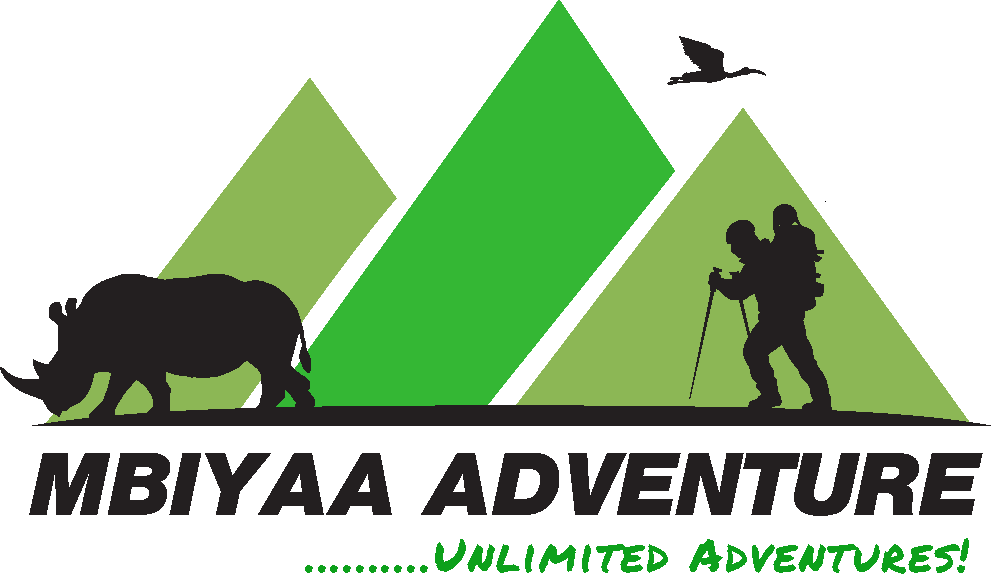Tanzania Safari Frequent Asked Question
There are a variety of safaris available in Tanzania; watch the migration in the Serengeti or travel the less trodden paths in Western Tanzania. Follow the migration in a mobile tented camp, or stay in a luxury lodge with your own 4×4 vehicle!. With some of the most spectacular scenery in the world, including the Ngorongoro Crater, and some amazing, wildlife Tanzania is a great bet. Tourism here is ahead of a lot of other destinations, with lots of good roads and a wide range of accommodation.
Please see below some answers to those frequently asked questions in Tanzania, and if there is anything you think we are missing or you would like to know – please get in touch.
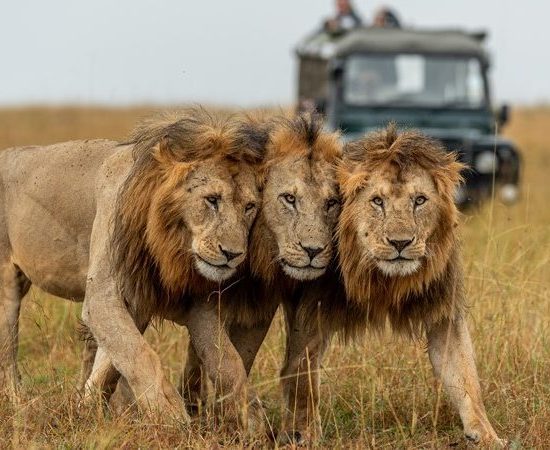

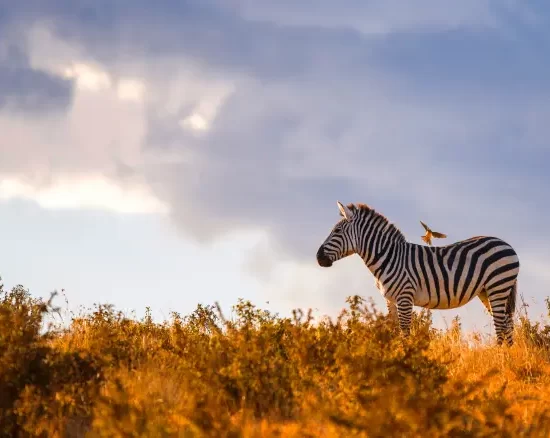
DO LODGES AND CAMPS HAVE MOSQUITO NETS?
HOW LONG ARE THE DRIVES BETWEEN LODGES?
There are, however, a number of lodges that are only an approximate 3hrs drive from one another. You may only be travelling 200kms to your next lodge but road conditions, especially during the wet seasons, lengthen the journeys. Also, in many locations you will be game driving and participating in other activities en-route to your next lodge meaning that you may check into your next lodge at sunset.
For the majority of the time however we recommend flying between the various lodges you are staying at; this offers you a quick and reliable means of transportation and also offers you some stunning views!
WHAT’S THE APPEAL OF RUAHA NATIONAL PARK?
Ruaha National Park is Tanzania’s largest National Park at 20,300km2. Activities in Ruaha centre around the Ruaha River, with its spectacular river systems, pools and rocky kopjes. Huge baobab trees stud the landscape and tall palms and riparian forest line the river which follows the south-east boundary for 160km. Other habitats include swamps, grasslands, and acacia woodland.
Ruaha has a hot, dry climate particularly between June-Nov, with the hottest period generally being Oct and Nov before the rains break leaving the Ruaha River dwindling with pools of water swarming with crocodiles and hippopotamus and dry rivers of sand. The rain mainly falls between Oct-May and towards the end of the wet period the Ruaha River becomes a flooded torrent. Game viewing is at its best from June-Nov when the animals concentrate around the Ruaha River, but the bush is greener and prettier from Jan-June and the birding is best during the European winter months of Dec-April.
And the wildlife…
Ruaha is an ecological meeting point; it is the only protected area in which the flora and fauna ofeastern and southern Africa overlap. It lies at the southerly extent of the range for east African ungulate species such as lesser kudu and Grants gazelle but it also harbours a number of antelope species that are rare or absent in northern Tanzania such species include greater kudu, roan antelope, and sable antelope.
The elephant population is the largest of any Tanzanian national park with some 12,000 elephant individuals migrating trough the Greater Ruaha Ecosystem. Ruaha is an excellent national park for predators. There can be close sightings of lions of over 20 individuals to a pride. Cheetah are resident in the open plains particularly in the Lundu area north east of the Mwagusi River and leopard is also frequently spotted. Over 100 African wild dog inhabit the Greater Ruaha Ecosystem. Visitors have the chance to spot one pack of African wild dog, consisting of approximately 40 individuals, as they move into the Mwagusi River area. Other predators include black-backed jackal, spotted hyena and the striped hyena (rare to spot as it is at the southern limit of its range). Ruaha’s most common ungulates include giraffe, zebra, buffalo, impala, waterbuck, bushbuck, reedbuck, eland, dik-dik, and warthog. Other wildlife includes mongoose, porcupine, wild cat, and civet.
Ruaha is an excellent birding destination with over 450 species recorded and has a good mix of southern and northern species. In particular, the Tanzanian endemics black-collard lovebirds and ashy starlings are found at their southerly extent of their distribution while the crested barbet, a southern African species, inhabits the park replacing the east African red and yellow barbet. Eurasian migrating birds flock to Ruaha twice a year (March-April & Oct-Nov).
Visitors can enjoy game drives, and depending on the lodge/camp guided game walks based at a lodge/camp, and mobile walking safaris between mobile fly camps.
WHAT CAN YOU DO AT THE NGORONGORO CRATER?
Away from the wildlife, the Ngorongoro Conservation Area has other areas of significance. Oldupai Gorge is one of Africa’s most important archaeological excavations where some of the world’s most humanoid remains were discovered. Inhabitants such as the Hadzabe and Tatoga people, hunter-gatherers and pastoralists, have lived here for thousands of years. Amongst the winding sandy tracks through the open grasslands and acacia trees exist the Shifting Sands. With religious associations for the Masaai the Shifting Sands are remarkable, moving along in the exact same formation at a rate of approximately 5mtrs per year. It consists of volcanic ash deposits from Oldonyo Lengai, too heavy for the winds to blow away. Since 1969, the sand has drifted some 2km’s.
Walking safaris to the Olmoti and Empakaai Craters is one of the little known secrets in the Ngorongoro Conservation Area. There exist wonderful views at the Empakaai Crater rim, 6km’s in diameter, of its lush and fertile crater floor and lake. This alkaline, deep soda lake (85m in depth) is surrounded by steep walls of the caldera, blanketed in forest, which rises to almost 300m above the crater floor. The views along the trail downwards are spectacular at every point with changing views of Empakaai itself. Upon descending towards the lake there are chances to spot buffaloes, bushbucks, blue monkeys, and birds such as sunbirds and turacos. Waterbucks and elands frequent the quiet and wild lake-shore.
By venturing to the northern and eastern side of the crater there exist great views out to the dramatic cone of the still active volcano, Oldoinyo Lengai and on a clear day wonderful views of the Great Rift Valley and Lake Natron beyond Oldoinyo Lengai are on show. This is also a great area to see the Embulbul depression, a shallow, grassy basin formed where the slopes of Olmoti, Empakaai, Lolmalasin and Losirua volcanoes join with the outer rim of Ngorongoro. Maasai and their livestock, as well as eland, buffalo, and reedbuck inhabit the area around the Olmoti Crater. The Munge River, originating from the waters of the Crater walls, plummets hundreds of metres over the cliffs into the steep sided ravine below.
WHAT SHOULD I WEAR ON SAFARI IN TANZANIA?
WHAT WILDLIFE CAN I SEE AT SELOUS GAME RESERVE?
The vast areas of Selous Game Reserve and Ruaha National Park consist of secluded and pristine wilderness areas and a wealth of wild game. Throughout these areas it is still possible to enjoy a game-drive without seeing another vehicle.
Three times the size of the Serengeti, the Selous Game Reserve is the largest wildlife sanctuary on the African continent covering an astounding 54,600km2. The Selous forms the nucleus of the 155,000km2 Greater Selous-Niassa Ecosystem, the largest tracts of relatively untrammelled bush in Africa, containing perhaps the greatest concentration of big game left on earth. Selous has a particularly high variety of habitats including Miombo woodlands, open grasslands, riverine forests and swamps. The reserve’s fire-climax vegetation creates soil erosion during the heavy rains. During this period, what once was a network of dry rivers of sand quickly become raging river torrents, creating a very dynamic ecosystem. As a consequence, roads within Selous become impassable and most camps close towards the end of the wet season (April – June) and reopen in July.
Selous Game Reserve is home to some of Africa’s large mammal populations including globally significant populations of African elephant (70,000), black rhinoceros (150) and wild hunting dog (1,300). It also includes one of the world’s largest known populations of hippopotamus (40,000) and buffalo (200,000). There are also important populations of ungulates including sable antelope (8,000), Lichtenstein’s hartebeest (55,000), greater kudu, eland and 100,000 white-bearded wildebeest (common in Tanzania & Kenya but at the most southerly extent of its range with the Rufiji River forming a natural barrier between the ranges) and Nyassa wildebeest (at the most northerly extent of its range again with the Rufiji River forming a natural barrier between the ranges). In addition, there is also a large number of lion (4,000), leopard, puku antelope (50,000), wildebeest (100,000), zebra (35,000), impala (25,000), giraffe (completely absent south of the Rufiji River), Nile crocodile, side-striped jackal, spotted hyena, Sharpe’s greysbok, topi, bushbuck, waterbuck, reedbuck, klipspringer, red and blue duikers, warthog, Sanje crested mangabey, Uhehe red colobus monkey (vulnerable), blue samango monkey, black and white colobus monkey, and yellow baboon amongst others. There exists a rich array of bird life in Selous, with an approximate 450 species including the endemic Udzungwa forest partridge (classed as vulnerable) and the rufous-winged sunbird (also vulnerable). Other species include knob-billed duck, southern ground hornbill, bateleur eagle, Stierling’s woodpecker, and white-headed lapwing. The globally threatened wattled crane, corncrake and lesser kestrel also occur.
Despite its vast area, the Selous is divided into two uneven parts split by the Rufiji and the Great Ruhaha Rivers. The approximate 5,000 foreigners who visit annually (1% of tourist arrivals to Tanzania) enjoy wildlife spotting in an area north of the Rufiji River, in just 5% of the total surface area. Game drives are particularly good towards the end of the dry season (Sept-Nov) when the large mammals concentrate along meandering Rufiji River, and the network of 5 attractive lakes and adjoining narrow streams, channels, swamps and volcanic hot springs.
Lion kills are regularly witnessed in Selous. Indeed, visitors have a higher chance to witness a lion kill here than almost any other reserve in Africa. This is partly because the dry season forces the lions to resort to an unusual diurnal hunting strategy. During this period, the lions rarely move from the lakes and wait to pounce on their prey.
Selous is probably the best place in Africa to see the endangered free-ranging African wild dog with an approximate population of 1,300, twice the total of any other African country, let alone any individual game reserve and close to 1/3rd of the worlds total population. The denning season between June-Aug is the best time to view the 3 separate packs (60 individuals) that live north of the Rufiji River.
With a herd of approximately 150 black rhinoceros Selous has the largest herd to be confined within any east African conservation area. Visitors to the reserve will search for the 10 resident individuals that inhabit the area north of the Rufiji River, in the Kidai sector and the Beho Beho hills of the north-west. During the dry season the elephants partake in an ancient migration between the Selous and Mozambique’s Niassa Game Reserves. This is one of the largest natural trans-boundary eco-systems in Africa with up to 70,000 elephant individuals roaming the two parks, 84% on the Tanzanian side.
Being a game reserve the Selous is not subject to the regulations that govern the national parks of Tanzania. Visitors can enjoy boat trips along the sandbanks, oxbow lakes, lagoons, and channels of the Rufiji River, tiger and vandu catfish fishing trips, game drives, excursions to the hot springs, guided game walks based at a lodge/camp, and mobile walking safaris between mobile fly camps.
WHAT WILDLIFE CAN I SEE IN THE NGORONGORO CREATER
The Ngorongoro Crater is the world’s largest intact volcanic caldera with a diameter of 16km and a crater wall over 600m high. It is a true Garden of Eden, an extraordinary natural sanctuary for some of Africa’s densest large mammal populations and predators. Over 400 spotted hyenas exist in the crater (especially on the eastern shore of Lake Magadi), along with lion’s, leopard (spotted on occasions in the swampy areas), and black-backed and golden jackals. The lion population has varied during the years partly due to migration into and out of the crater but mainly because of the vulnerability of the compact population. Cheetah, although common in the Conservation Area, are scarce in the Crater possibly due to the high rate of competition from other predators. Elephant (especially around the Gorigor Swamp area) and buffalo are regularly seen. There also exist residential populations and large concentrations of wildebeest (over 10,000 in number), burchell’s zebra (approximately 5,000), and buffalo, tsessebe, thomson’s and grant’s gazelle in the open grasslands of the crater floor. The Ngorongoro Crater is perhaps the best place in Africa to see the endangered black rhinoceros.
At the Ngoitokitok Springs there is a permanent hippo pool (a fantastic stop-off point for a picnic lunch) and waterbuck, bushbuck and eland are best spotted around the Lerai Forest Area, which consists almost entirely of yellow fever trees. Giraffe and impala, both common in the surrounding plains, are notably absent in the Ngorongoro Crater. The lack of suitable food and being incapable of climbing the steep crater walls explain the giraffes absence.
The Ngorongoro Crater has over 500 species of birds. The bird life in the crater varies according to the seasons but the crater floor does offer superb birding. Lake Magadi, a shallow soda lake which has seasonal variations, is home to a large flock of greater and lesser flamingos and Mandusi Swamp is great for spotting water birds. The grasslands are where the savanna birds are found. Such species include kori bustard, Maasai ostrich, and secretary bird along with endemics such as Fischer’s lovebird, grey-breasted francolin and rufous-tailed weaver. Schalow’s turaco, golden-winged, coppery-colored bronze, malachite and Tacazze sunbird are just some of the many bird species that exist along the rim of the crater, particularly competing for nectar amongst the flowering Leonotis. Hartlaub’s turaco and eastern double-collared sunbird are just some of the montane specialist forest birds that inhabit the crater rim.
WHEN’S THE BEST TIME FOR WILDLIFE IN TANZANIA?
The vast Serengeti plains and the hills of Kenya’s Masai Mara are the setting for the world’s greatest wildlife spectacle, the 1.5 million animal ungulate (wildebeest) migration. Over 1.4 million wildebeest and 200,000 burchell’s zebra and gazelle, relentlessly tracked by Africa’s great predators, migrate over 3,000km during their circuitous annual pilgrimage in search of rain ripened grass. There exist over 10,000km2 of nutrient-rich short-grass plains in the southern Serengeti National Park while the western and northern sections are defined by their long grass and acacia woodlands.
Once the ‘short rains’ fall in November and December (sometimes as early as October) the migration moves from Kenya’s Masai Mara down through the eastern side of Tanzania’s Serengeti into its sweet and fertile southern-grass plains. It is the Serengeti’s nutrient-rich short-grass plains that consist of high levels of calcium, magnesium and phosphorus derived from volcanic ash blown for millions of years by easterly winds from the Ngorongoro Highlands that provide the vital nutrients and elements for the pregnant wildebeest and their newborn young.Here, the wildebeest and other ungulates settle between January and April, hosting the greatest concentrations of animals.
There is no bad time to visit Tanzania as each season is brimming with activity and each season has its advantages, however if possible, it is worth trying to avoid the peak tourist season, the northern hemispheres ‘winter’. June and July are particularly busy but this is also the best time for viewing the wildebeest migration and river crossings in the northern Serengeti. The dry season, particularly between June and October, is also great for trekking, which include trekking Mt. Kilimanjaro and Mt. Meru. Temperatures on the coast tend to be more bearable at this time of year and there is generally less mosquitoes. Chimpanzee tracking in western Tanzania can be done all year round however some of our favourite times are during the months of July to October when the chimpanzees are on the lower slopes of the Mahale Mountains making for easier trekking.
The wetter period of the year between November and April is the greenest, particularly in the Serengeti. This period offers the best in birding with resident species supplemented by a number of Palaearctic and intra-African migrants. The wettest months are March and April, when parts of the country may experience storms daily.
WHEN IS THE GREAT WILDEBEEST MIGRATION?
The vast Serengeti plains and the hills of Kenya’s Masai Mara are the setting for the world’s greatest wildlife spectacle, the 1.5 million animal ungulate (wildebeest) migration. Over 1.4 million wildebeest and 200,000 zebra and gazelle, relentlessly tracked by Africa’s great predators, migrate in a clockwise fashion over 1,800 miles each year in search of rain ripened grass.
Once the ‘short rains’ fall in November and December (sometimes as early as October) the migration moves from Kenya’s Maasai Mara down through the eastern side of Tanzania’s Serengeti into its sweet and fertile southern-grass plains. Here, the wildebeest and other ungulates settle between January and April. In April and May the ‘long’ rains set in and the migration starts moving from the depleted southern plains north to the long grass plains in the western corridor. Large river crossings on the Grumeti and Mara Rivers occur as the migration heads back into Kenya’s Maasai Mara – the season dries out and fresh grazing and water can be found in the far north. The Masaai Mara is usually at its best in August, September and October.
WHERE IS THE BEST PLACE IN TANZANIA FOR BIRDING?
With close to 1,150 species of birds, of which 23 species are endemic and 36 species globally threatened, Tanzania ranks as one of the top birding destinations in Africa, and the second most varied avifauna of any country on the African continent.
TARANGIRE NATIONAL PARK
The scenic Tarangire National Park is famous for its thorn bush scrub, huge baobab trees and, in the dry season, large elephant herds. Birding in Tarangire is fantastic, with over 500 species so far recorded. The baobab-clad plains and fever-tree groves support many bird species including three Tanzanian endemics: ashy starling, yellow-collared lovebird, and rufous-tailed weaver while the dense scrub below is the habitat for species such as white-browed scrub-robin, green-winged pytilia and bronze-winged courser.
Some of the many savannah species that exist in Tarangire National Park include eastern chanting goshawk, African pygmy falcon, bateleur eagle, chestnut-bellied sandgrouse, red-necked and yellow-necked spurfowl, double-banded courser, crowned lapwing, abyssinian scimitarbill, red-fronted, red-and-yellow, and spot-flanked barbets, northern crombec, taita fiscal, spotted morning thrush, African grey flycatcher, irania, barred and pucher’s warblers, hildebrandt’s, superb, wattled and fischer’s starlings, beautiful and eastern violet-backed sunbirds, black-necked weaver, white-headed buffalo weaver, black-faced waxbill, purple grenadier, southern grosbeak canary, Somali golden-breasted and cinnamon-breasted buntings. Other bird species include Maasai ostrich, red-necked spurfowl, bare-faced go-away bird, black-faced sandgrouse, lilac-breasted roller, nubian woodpecker, white-browed coucal, African hoopoe, magpie shrike, northern white-crowned shrike, and white-headed, Rüppell’s and African white-backed vultures.
LAKE MANYARA NATIONAL PARK
As well as its ‘tree climbing lions’, Lake Manyara National Park is famous for its pink haze of thousands of flamingos that stretch across the horizon. Due to its range of habitats Lake Manyara National Park has a list of over 450 species of bird species. The number of water birds seen is dependent on the water level in the lake. Nevertheless, The park is full of wetland birds and along its lake shore exist saddle-billed stork, pink-backed and great white pelicans, spur-winged goose, rufous-bellied and goliath herons as well as waders such as collared pratincole, blacksmith and spur-winged lapwings, and water thick-knee. The acacia woodland with ancient mahogany and mvule trees, from Msasa River to the extreme southern end of the park, is home to Narina’s trogon, eastern bronze-naped pigeon, white-headed barbet, and collared palm-thrush. Other species include crested guineafowl and square-tailed nightjar.
THE NGORONGORO CRATER
The Ngorongoro Crater is the world’s largest intact volcanic caldera. It is a true Garden of Eden, an extraordinary natural sanctuary for some of Africa’s densest large mammal populations and predators as well as over 500 species of birds. The birdlife in the crater varies according to the seasons but the crater floor does offer superb birding. Lake Magadi, a shallow soda lake which has seasonal variations, is home to a large flock of greater and lesser flamingos and Mandusi Swamp is great for spotting water birds.
The grasslands of the Ngorongoro Crater are where the savanna birds are found. Such species include kori bustard, Maasai ostrich, and secretary bird along with endemics such as Fischer’s lovebird, grey-breasted francolin and rufous-tailed weaver. Other bird species include grey crowned crane, Shelley’s francolin, black stork, lappet-faced vulture, Hunter’s and pectoral-patch cisticolas, the endemic rufous-tailed weaver, and northern anteater chat. Schalow’s turaco, golden-winged, coppery-colored bronze, malachite and Tacazze sunbird are just some of the many bird species that exist along the rim of the crater, particularly competing for nectar amongst the flowering Leonotis. Hartlaub’s turaco and eastern double-collared sunbird are just some of the montane specialist forest birds that inhabit the crater rim.
SERENGETI NATIONAL PARK
Amongst the long savanna grasslands punctuated by rock kopjes, and patches of acacia forest the Serengeti National Park is home to a huge variety of bird species. The Serengeti Biodiversity Program has stated that the Serengeti is host to more than 540 bird species, residents and migrants inclusive. The red-throated tit, grey-crested helmet-shrike, rufous-tailed weaver, Schalow’s wheatear, grey breasted spurfowl, and Schalow’s turaco are all endemic to the Serengeti ecosystem.
Out on the plains of the Serengeti exist kori and buff-crested bustard, coqui francolin, the near endemic Hildebrandt’s starling, Fischer’s lovebird, grey-backed fiscal, Abdim’s stork, yellow-throated sandgrouse, freckled nightjar, plain-backed pipit, sooty chat, the endemic Tanzanian (Ruaha) hornbill, rosy-patched shrike, long-tailed cisticola, and buff-bellied penduline. The plains are also used by migratory birds including white stork, pallid harrier, and peregrine falcon. Black-headed gonolek, common wattle-eye, and the recently found Karamoja apalis inhabit the Western Corridor while the wooded central Serengeti harbour Usambiro barbet, silverbird, Meyer’s parrot, black-faced go-away-bird, rufous chatterer, gray and bearded woodpeckers, and black-faced babbler.
ARE THERE ANY MEDICAL REQUIREMENTS TO ENTER TANZANIA?
It is very important to set an appointment with a travel doctor in your home country before you come to Tanzania.
The following vaccinations are recommended for travelers going to Tanzania: Hepatitis A and a combined tetanus, diphtheria and inactivated polio vaccine (Td/IPV). Proof of Yellow Fever vaccination is only required if you are traveling to Tanzania from countries that have Yellow Fever Endemic or if you transit in Yellow Fever Endemic Areas for more than 12 hours.
Check the CDC’s website for updated health information for travelers to Tanzania. http://wwwnc.cdc.gov/travel/destinations/traveler/none/tanzania
If you use prescription medication or if you suffer from a medical condition that requires special consideration, it is best to consult your physician and inform the aircraft company before flying. You may require a medication passport to show authorities abroad and flight attendants that you need certain medication. In the event that you lose your medication or require additional supplies abroad, the medication passport will allow you to refill your prescription. In addition, you will usually need a doctor’s certificate in the form of a medical certificate written or translated into English. The same may apply to traveling with medical equipment. Enquiring about these things may take weeks, so it is best to start well in advance.
WHAT IS TANZANIA’S CURRENCY?
The local currency is the Tanzania Shilling (TZS). In hotels and restaurants, bills can normally be paid in USD, but in local shops and markets, you will need TZS which is available at most banks and bureaus in major towns. ATMs are available in Dar es Salaam and Arusha, and most major towns, but once you are out on safari (in the bush), you will not have access to either banks or ATMs, so exchange sufficient funds beforehand. Credit cards are normally accepted in the bigger hotels and restaurants, but in the smaller lodges or hotels, there is often no access.
WHAT DO I PACK FOR A SAFARI?
- All necessary documents: passport, itinerary, travel insurance, vaccine certificate and others that might apply.
- Any medication and pharmaceuticals you might need: This should include medication for possible common situations like headaches or diarrhea.
- Sunblock, sunglasses, hat, lip balm and moisturizer.
- Your camera: we recommend bringing a wide lens (about 17-55mm) for those scenery pictures, and a telephoto lens (in the 200-400mm range) to catch animals at a distance.
- Binoculars: We do provide a pair of top notch binoculars in the vehicle but feel free to bring your own which you may be more used to.
Clothes: Comfortable and casual clothing, with khaki, beige or green colors. You should pack t-shirts, shirts with long sleeves, long pants, a sweater and a jacket (for the cold mornings), swimwear (if the accommodations you selected have a pool or if you do a beach extension) and comfortable hiking shoes. Remember: a same-day laundry service is usually available in most safari camps and lodges. This means you DO NOT need a change of clothes for each day you are on safari.
Casual, comfortable clothing is suitable throughout the year when on safari. Whilst you may elect to start a completely new safari ‘wardrobe’ it is really not necessary! Apart from selecting reasonably neutral or ‘non-bright’ colored clothing, safari-wear is generally casual and practical. Be sure you take clothes that you feel comfortable in – especially when it comes to your walking/hiking boots. The newer quick-drying fabrics, shirts with ventilation and trousers that convert into shorts are all worth considering.
- Toiletries
- Insect repellent (30% Deet)
- Travel diary or notebook
- Sense of humor, patience, and common sense 🙂
Hopefully, these tips will help you to figure out what you need to pack for your safari. If you need more information or want to go ahead and embark on a safari adventure, contact us. We’ll be happy to help you decide on the best safari options.
At what time do safaris start?
We recommend leaving the lodge as early as possible (6:30-7AM). There are a number of reasons for this: mornings tend to be cooler, which is more comfortable for you and brings you to the bush when the animals are most active; you have a chance of getting to the Park ahead of other tourists; all the park fees in Tanzania are paid by the day, regardless of the time spent within the Park, with 6PM being closing time, so getting there early gives you more time to enjoy the wilds of Africa before you have to return to your lodge. That said, the above is but a recommendation. Our guides’ foremost concern is client satisfaction, and they will adjust all the schedules according to your wishes.
What is a safari vehicle?
Our fleet of safari vehicles consists of customized 2016-2020 Toyota Land Cruiser 4×4 vehicles. All the vehicles have ergonomic seats, fridges for cold drinks and snacks, electrical outlets for device charging, binoculars and first-aid kits. Pop-up roofs, which allow you to stand up and observe and take photos in greater comfort, are also part of the package.
Is Wi-Fi available at hotels and lodges?
All hotels and lodges have Wi-Fi and Internet access. However, one should get used to the idea that the speed may be slower.
Should I tip the safari driver?
Tipping is expected in Tanzania. We recommend $30-50 per every day of the safari per car, provided you are satisfied with the service.
